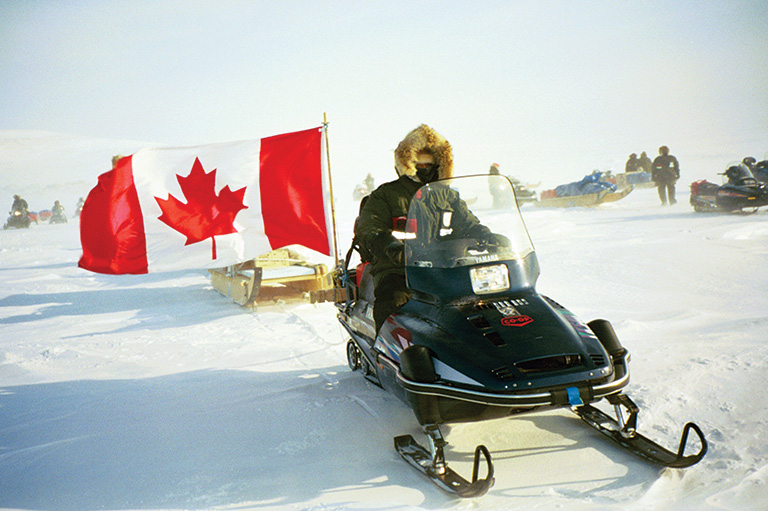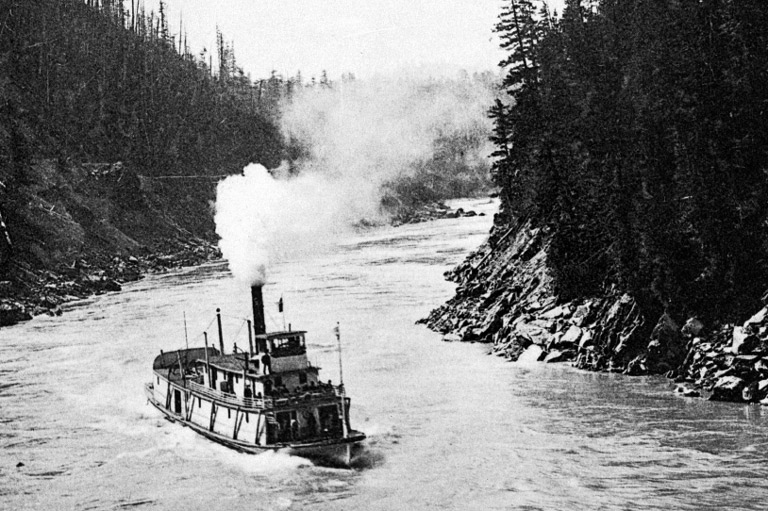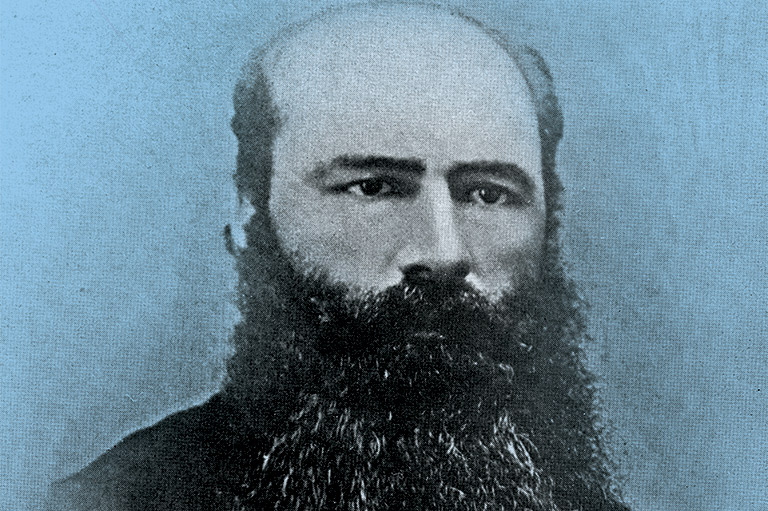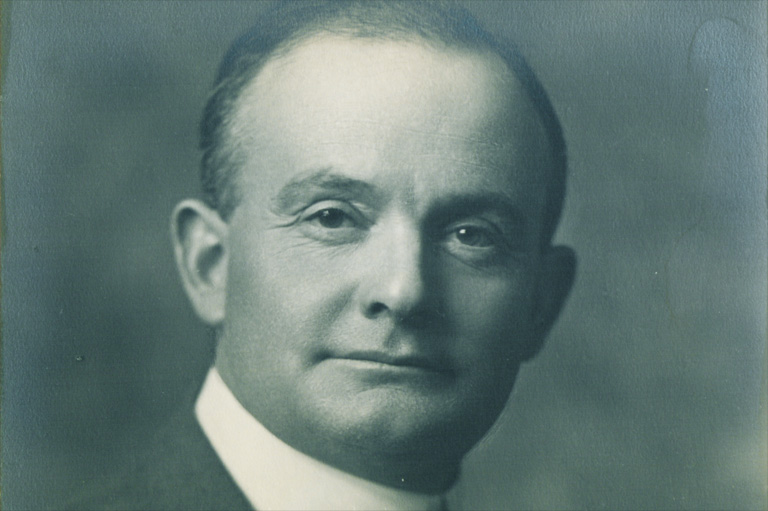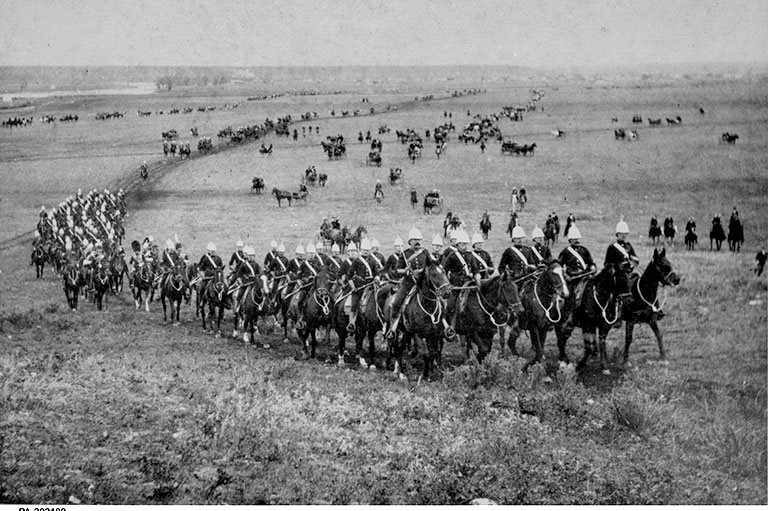Discover a wealth of interesting, entertaining and informative stories in each issue, delivered to you six times per year.
Respecting Boundaries
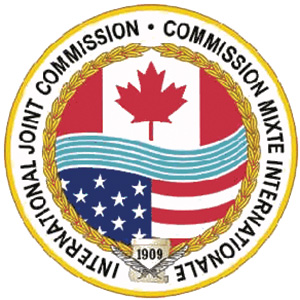
Friction along the Canada-United States border has been commonplace since the outbreak of the American Revolutionary War in 1775.
Until the last third of the nineteenth century, disputes were mostly about the actual location of the border. Later, other issues came up, such as international trade and the use of boundary waters for navigation.
These early disputes were usually solved through temporary commissions set up by Great Britain and the United States. Gradually, the makeup of these temporary joint commissions changed to include more Canadian representation — the practice of appointing at least one Canadian public figure started soon after Confederation.
The Joint High Commission of 1898–99 had three Canadians among its ten members, including Prime Minister Wilfrid Laurier. When that commission failed to resolve the Alaska boundary dispute, the matter was put before an arbitration tribunal that settled the matter in 1903.
The late nineteenth century and turn of the twentieth century saw many new border issues arise as the North American economy expanded. The continent’s inland waterways were being utilized at an unprecedented rate. The demand for irrigation in the semi-arid regions of the Westand the calls for hydroelectric generation to light the cities of North America’s industrial heartland were by-products of this new prosperity.
One source of conflict was the increasing diversion of water from the lakes and rivers along the international boundary. For instance, at Chicago, water needed for the city’s sewage system was diverted southward from Lake Michigan into the Mississippi watershed. The diversion threatened to lower water levels in the Great Lakes and impede navigation.
Elsewhere on the Great Lakes, water was being diverted for hydroelectricity generation. Power companies in New York state were applying for licences to channel so much water away from the Niagara River that Niagara Falls was threatened with drying up.
Meanwhile, concerns about a canal and hydroelectricity plant completed in 1902 at Sault Ste. Marie, Michigan, led to an investigation by the U.S. Army Corps of Engineers that resulted in several recommendations, one of which was the creation of an international commission to find solutions to these problems.
As the result of these developments, the International Waterways Commission (IWC) was established and began functioning in 1905. Members of the IWC were instrumental in promoting the idea of a long-term and more comprehensive solution to international issues.
There were also propitious developments in international politics. Britain’s position as the world’s maritime superpower was being challenged by other European powers — the policy of “splendid isolation” no longer guaranteed British security.
To end their country’s diplomatic isolation, British statesmen sought rapprochement with the United States. To improve relations with the U.S., the British needed to remove irritants between that country and what they often continued to consider “their colony” in North America. The brave new world of the times required brave new solutions — and one of these was the IJC.
The development that gave birth to the commission was the Boundary Waters Treaty of 1909. Through this treaty, for the first time in Canadian and American affairs, the governments of the contracting parties surrendered a part of their control over common waters to a joint agency. More important was the fact that the commission was to be a permanent body.
The commission was to have no British member, only three Canadians and three Americans staffing each of its two sections. The IJC was in part established as a court of arbitration to which the two governments could refer disputes for binding solutions; however, this function of the IJC was never put to use, no doubt because most of the commissioners serving on the IJC were technocrats rather than people with training in international law.
The IJC had its first meeting in Washington, D.C., in January 1912. Since then, it has performed yeoman service for both countries. The commission has received applications from states, provinces, and municipalities for the approval of construction projects in boundary waters and for projects potentially affecting such waters. It has rejected or approved these applications and sometimes set up subsidiary joint boards to monitor and manage the projects in question.
The IJC also investigates problems along the international boundary and produces reports for their solution. Its recommendations are implemented if both governments are in agreement.The IJC’s investigations can be wide-ranging and do not even need to relate to boundary waters. For instance, problems related to transborder air pollution have also been put before the commission.
The most important function of the IJC is to prevent problems arising along the international boundary from becoming sources of political friction. The IJC is important to both countries, but it is arguably more important to Canadians. Without the IJC, some problems would become heated debates. In public disagreements between Ottawa and Washington, the latter is more likely to have its way, simply because of the greater weight the U.S. carries in the international arena.
Nothing speaks more highly of the importance of the IJC than the fact that other joint agencies were later established that were patterned on the same basis. Perhaps the most famous of these is the Permanent Joint Board on Defence (PJBD) created in 1940 by an agreement between President Franklin D. Roosevelt and Prime Minister William Lyon Mackenzie King. The PJBD is an advisory body that helps to coordinate the two countries’ defence efforts. Its activities were especially important during World War II.
Canada and the U.S. have a unique and significant institution in the IJC. We can only hope that this agency will continue to exist and serve Canadians and Americans for another century — and even beyond.
Moments of resolution
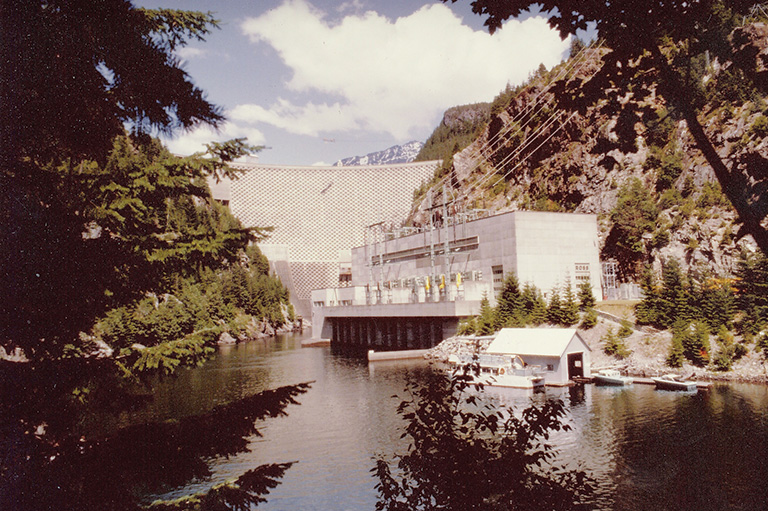
Seeing the light
Many British Columbians objected to plans by the Seattle City Light Company to increase the height of the Ross Dam because it would have flooded more than two thousand hectares of prime wildlife habitat and recreational area in their province.
The IJC brought officials together to create a treaty in 1984. In return for not raising the dam, Seattle received access to power from British Columbia at rates equivalent to what would have resulted from heightening the dam. The High Ross Treaty also included environmental enhancements in the Skagit River watershed.
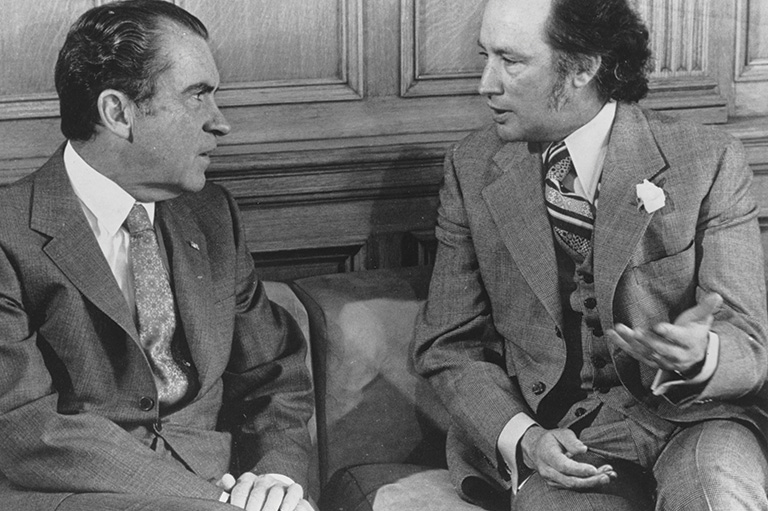
Muddy waters
By 1900, transboundary water pollution from sewage and industrial waste was leading to deadly oubreaks of cholera and typhoid. One of the first jobs the IJC was given when it was formed in 1912 was to investigate the problem.
The commission began what was then the largest survey of bacterial pollution. The findings helped communities safeguard public drinking water supplies through chlorination and other measures. Yet, it took several decades for both countries to agree on measures to reduce water pollution.
The Great Lakes Water Quality Agreement, first signed in 1972 and last amended in 1987, is designed to restore the lakes’ ecological balance.
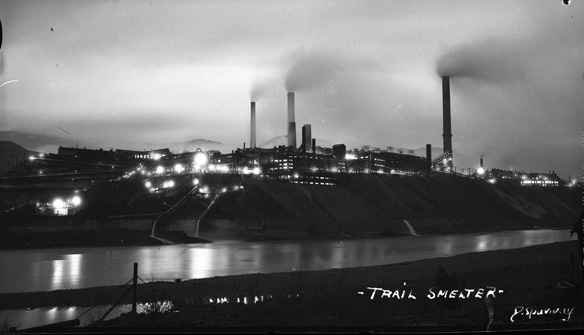
Clearing the air
In 1928, sulphur dioxide fumes from a lead and zinc smelter in Trail, British Columbia, were toxic enough to kill trees and crops in northeastern Washington state. The IJC recommended remedial measures and a formula for payments to cover the damages. The case was significant because it set a precedent in international law and established the “polluter pays” principle.
We hope you will help us continue to share fascinating stories about Canada’s past.
We highlight our nation’s diverse past by telling stories that illuminate the people, places, and events that unite us as Canadians, and by making those stories accessible to everyone through our free online content.
Canada’s History is a registered charity that depends on contributions from readers like you to share inspiring and informative stories with students and citizens of all ages — award-winning stories written by Canada’s top historians, authors, journalists, and history enthusiasts.
Any amount helps, or better yet, start a monthly donation today. Your support makes all the difference. Thank you!
Themes associated with this article
Sponsored by
This article, prepared for Canada’s History, is part of a four-part series on environmental history generously sponsored by the Walter & Duncan Gordon Foundation.
You might also like...

Canada’s History Archive, featuring The Beaver, is now available for your browsing and searching pleasure!

Beautiful woven all-silk necktie — burgundy with small silver beaver images throughout. Made exclusively for Canada's History.


